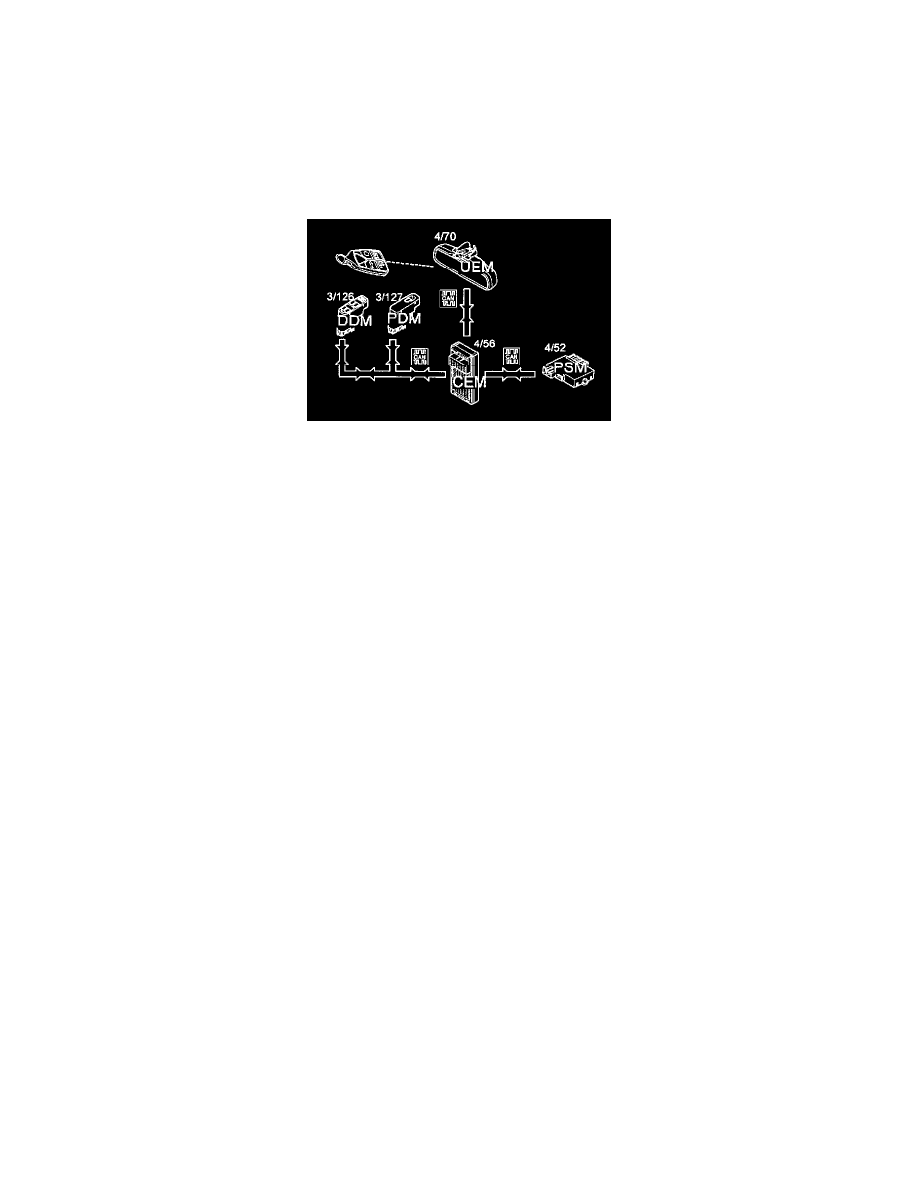V70 2.4T L5-2.4L Turbo VIN 58 B5244T3 (2002)

moving the seat. The control buttons are on the outside of the seat and are in the shape of a small seat and a small backrest. There are two control buttons
on each panel. The buttons are spring-loaded, so they must be held pressed in for the seat to move.
The seat can be maneuvered:
-
Within a period of 9 minutes and 40 seconds of the door being opened.
-
Within 40 seconds of the door being closed.
-
With the key in the radio position.
-
With the ignition on.
Remote operation of seats
There are three memories in the power seat module (PSM) which store the seat positions for a maximum of 3 remote controls. There are also three
further memory positions which can be stored from the control panel. The seat can store a total of six different memory positions.
Cars with power seats with memory have a personal setting function. Using this function, the positions of the mirrors and seat can be stored individually
for each remote control (a maximum of three remote controls, i.e. remote memory positions 1, 2 and 3).
The customer parameters in the power seat module (4/52) determine whether the remote memory for the seat is activated or not.
From model year 2003 inclusive the remote control memory for the mirrors can also be switched off. This is done using a customer parameter in the
driver's door module (DDM) (3/126) and passenger door module (PDM) (3/127). "Programming of the remote control settings" for seats and mirrors is
carried out via VADIS/VIDA vehicle communication.
The signal from the remote control is transmitted to the upper control module (UEM) (4/70) when the car is locked or unlocked.
The upper electronic module (UEM) also identifies which remote control is being used. The central electronic module (CEM) (4/56) receives this
information from the upper electronic module (UEM).
The central electronic module (CEM) identifies and stores the remote control which is being used and determines the data to be sent to the power seat
module (PSM) (4/52), driver door module (DDM) (3/126) and passenger door module (PDM) (3/127). This is done when the door is opened.
For model year 2003 the central electronic module (CEM) transmits information about which remote control locked the car.
From model year 2003 inclusive, the central electronic module (CEM) transmits information about which remote control locked the car and which
unlocked the car.
If the position of the seat is changed, the power seat module (PSM) (4/52) stores the new position before reverting to sleep mode.
Remote memory positions are stored in the power seat module (PSM) in the following cases:
-
10 minutes after the door has been opened.
-
1 minute after the door has been closed.
-
With the ignition off.
-
When the key is removed from the ignition switch.
-
When a new remote control is activated.
The remote memory positions for the door mirrors are stored for the driver door module (DDM) and passenger door module (PDM) in the following
cases:
-
When the key is removed from the ignition switch.
-
When a new remote control is activated.
When the car is unlocked, the power seat module (PSM) uses the information about which remote control unlocked the car. This is so that the correct
remote memory position can be selected (i.e. the seat position last set by the driver for this remote control). When the door is opened the seat starts to
move to the programmed remote memory position. The seat can be stopped by pressing one of the buttons on the control panel.
